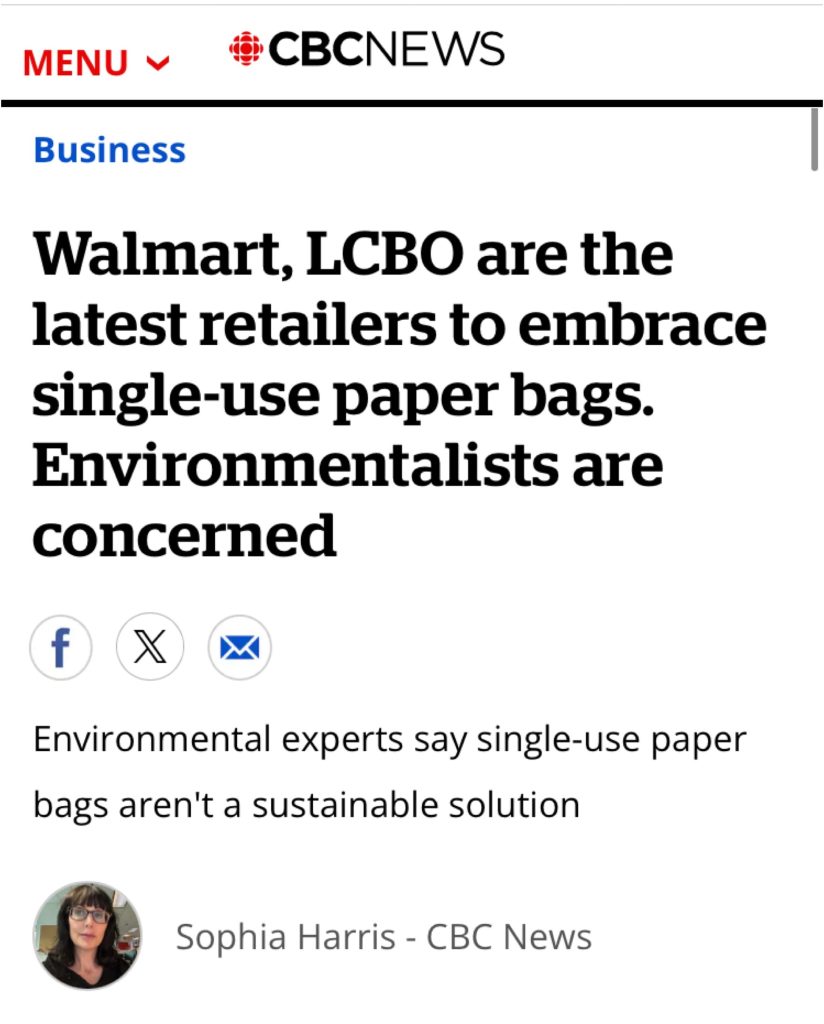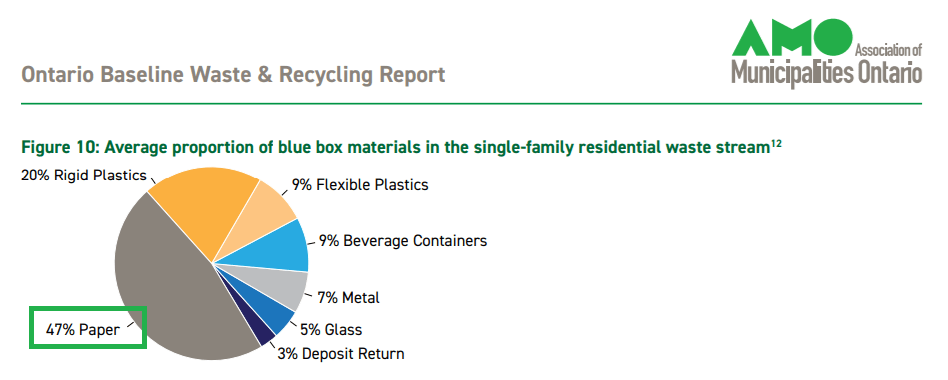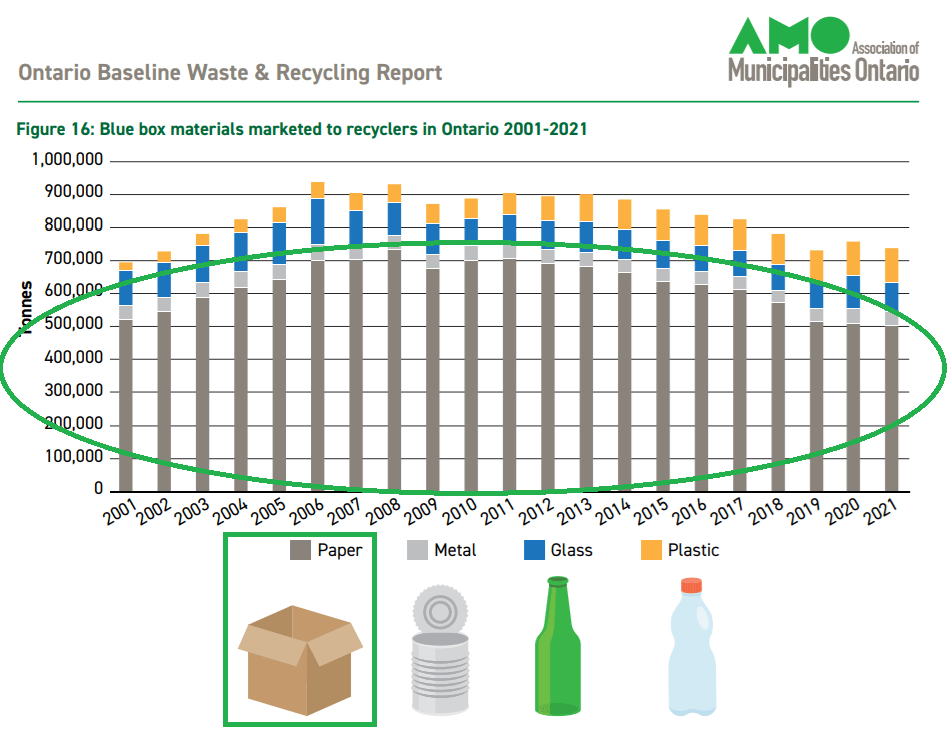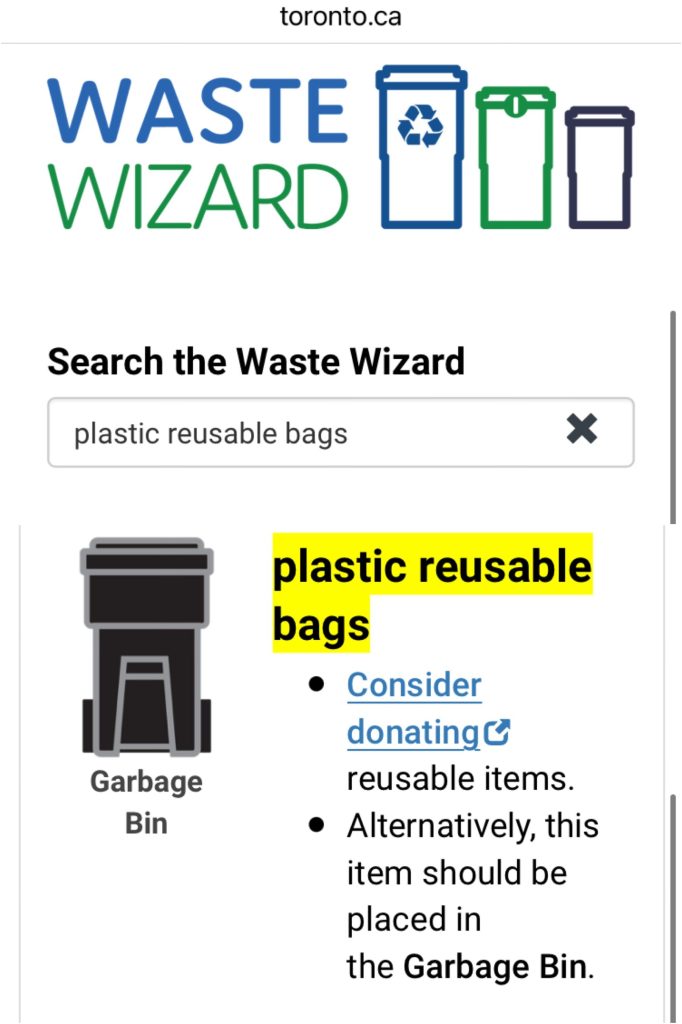Paper bags have been back in the news recently due to a decision by the Liquor Control Board of Ontario (LCBO) on their new bag supplier. In April 2023, the LCBO announced they would ban paper bags from their stores for environmental reasons, which PPEC and others challenged. A year later, the Premier directed Ontario’s alcohol retailer to reinstate paper bags, which PPEC supported.
In October, after a competitive bid process, the LCBO awarded the new bag contract to a Quebec-based supplier (owned by a U.S. company), resulting in criticism for not selecting a local Ontario-based business. The premier’s office has since stepped in, directing the Crown agency to redo the bid and look for an Ontario supplier.
PPEC isn’t here to comment on bid processes or government procurement policies. But our role is to provide facts and context, especially when the original reasoning behind the LCBO’s paper bag ban remains unchallenged, and when news articles share inaccurate information about the recyclability of paper bags, which creates confusion and perpetuates myths about the sustainability of paper-based packaging.
It was misleading enough when the LCBO originally announced that their plan to remove the approximately 135 million paper bags used annually at their stores would divert “2,665 tonnes of waste from landfill” and save “the equivalent of more than 188,000 trees every year,” without providing any facts to back up those statements.
And now this recent CBC article, Walmart, LCBO are the latest retailers to embrace single-use paper bags, dismisses the environmental benefits of paper bags, lacks a full assessment of reusable bags, ignores the role of consumers in recycling and reuse, and misses the opportunity to provide context about the role of bags and shopping.

How Paper Bags are Made
We don’t know where the LCBO got their 188,000 trees figure from, but we do know that the Canadian paper packaging industry doesn’t use much in the way of trees. Canadian kraft paper manufacturers often use by-products left over from sawmill operations – such as wood chips, shavings, and sawdust – as the raw material for paper bags. Using residual materials minimizes waste by repurposing a byproduct that would otherwise be discarded, and ultimately reduces the need for trees.
Essentially, paper bags can be made from virgin material by using byproducts from lumber operations, or from recycled content, or a combination of both, depending on strength and durability requirements.
The Recyclability of Paper Bags
PPEC doesn’t understand why the LCBO would make an assumption that recyclable paper bags are landfilled when they are widely accepted in residential recycling programs and have available end markets that buy back used paper materials.
Which brings us back to the CBC article, which quotes researcher Calvin Lakhan as disagreeing that paper bags are recyclable, arguing that “lower-grade brown paper used in shopping bags frequently doesn’t get recycled,” and that “the fibres grow weaker, making it less likely they can be recycled again.” No evidence is provided to back up those assertions so let’s clarify a few things. It’s true that paper cannot be recycled indefinitely, but it can be recycled on average about 5-7x, after which the fibres weaken and shorten, and then fresh fibre – from sustainably managed forests or sawmill residues – is introduced to maintain strength and quality.
But to achieve this recycling loop, the bag has to be recycled in the first place, which we know is happening since the average recycled content for domestic shipments of containerboard and boxboard – used to make some of the most common forms of paper-based packaging such as corrugated cardboard and paperboard – is just over 80%, according to PPEC’s 2022 Recycled Content Survey Report, keeping valuable materials in circulation, reducing waste, and minimizing the need to extract virgin materials.
Even CBC’s article states that the paper bags Walmart uses are made with 96% recycled materials. The proof is in the pudding, and yet Lakhan states otherwise. How can you have a bag with 96% recycled content without recycling?
The article goes on to cite a statistic from Environment Canada that an estimated 55% of paper waste is recycled into new materials, which Harris refers to as “a sobering statistic.”
There is nothing sobering about how more than half of collected paper materials, which includes paper bags, are being recycled. Paper fibres represent the majority of materials diverted from landfill in Canada, and in Ontario, they represent nearly half of what is collected in the residential Blue Box recycling program, as shown below from the Association of Municipalities of Ontario’s 2023 Baseline Waste & Recycling Report.

Paper fibres also represent the majority of the materials that are marketed, which represents materials that have been sorted and processed by a material recycling facility, and then baled and sold so they can be used in place of virgin materials.

These encouraging stats are aligned with the experiences in the paper packaging industry where using recycled content is an inherent part of our industry’s operations.
A Missed Opportunity to Provide Facts and Context
In addition to missing the facts about the recyclability of paper bags, the CBC article misses the opportunity to provide a fuller understanding of this topic, including information about reusable bags and the role of the consumer.
Reusable Bag Facts
Canadian businesses are no longer permitted to offer plastic bags due to the federal government’s single use plastics ban, which has resulted in a shift to alternatives, including reusable bags which can be made from plastic, cloth, cotton, nylon, or polyester.
While reusable bags should theoretically reduce waste, their sustainability hinges on the actions of the consumer to remember to bring their reusable bags when they shop. And according to recent research, Canadians have accumulated over 23 reusable bags per person annually, leading to an excess of more than 900,000,000 bags each year.
The reusable bags commonly found at grocery stores are made from polypropylene (plastic), which is typically not recyclable, and since they don’t tend to break down or decompose, these types of bags may be unintentionally creating more waste as consumers look to reduce their stockpiles of them.

To counter this new waste problem caused by not reusing reusable bags, some retailers have even launched reusable bag recycling programs, which ultimately defeats the purpose of the reusable bag.
Consumer Role and Function of Bags
The article also overlooks the role of the consumer – from their role in reusing reusable bags to recycling paper bags responsibly. And it’s also important to recognize the function of bags in supporting how people shop – whether for grocery delivery or carrying items home. Any article about packaging should reflect the real world context in which bags serve a purpose in meeting consumer needs, keeping products safe, and facilitating transportation – especially in the age of online shopping – while also balancing environmental considerations.
Bottom Line
The bottom line is that there should be no controversy around the recyclability of paper bags. While there’s still work to do with increasing recycling rates and encouraging responsible consumer behaviour, publishing articles that overlook facts and context only creates confusion and spreads misinformation.
